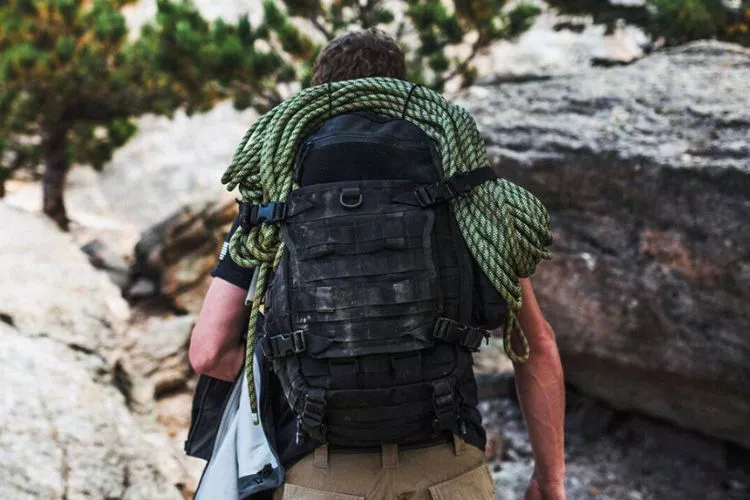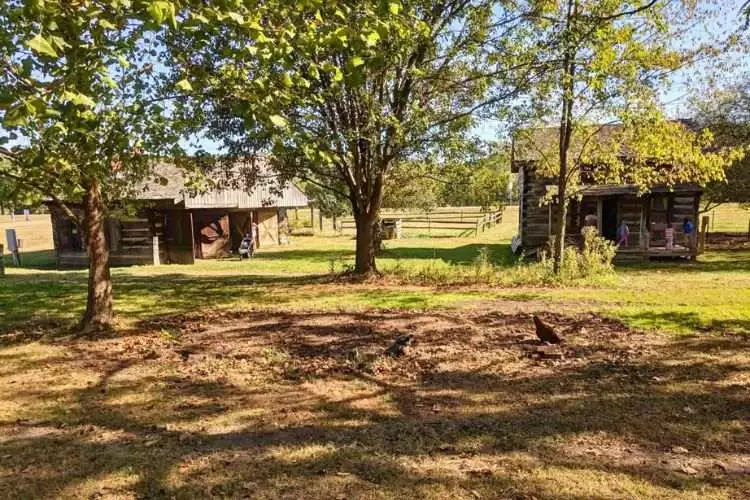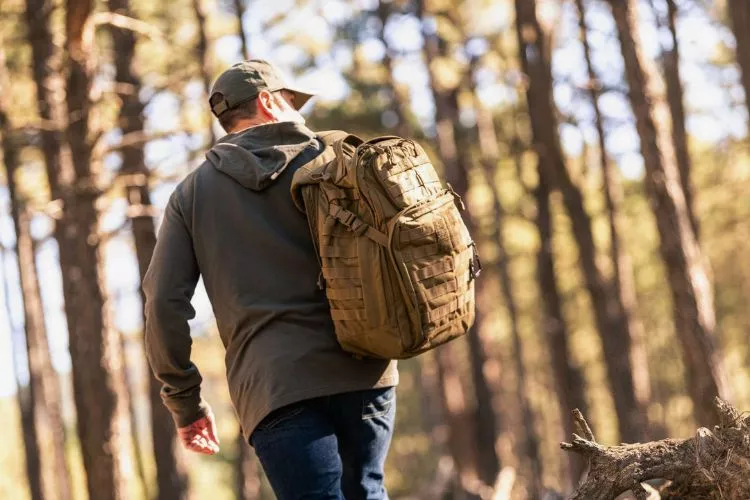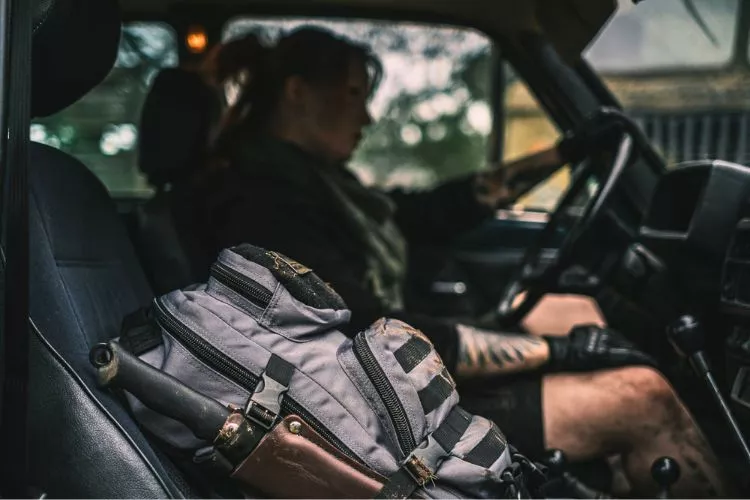What if disaster strikes and you’ve got no land to call your own? Many survival enthusiasts confront this question. Bug-out strategies usually involve a retreat to a private piece of property.
So, can you bug out if you have no land?
This article explores ways to bug out, defending yourself and surviving, even without owning land.

Dive in to enrich your disaster preparedness strategies!
Can you bug out if you have no land?
Yes, you can! Bugging out without land ownership asks for good planning.
Here are some strategies one may use:
Join a Group: Cooperate and Thrive
Teaming up is always better than going solo. Find or form like-minded groups to:
- Share skills and knowledge
- Share expenses, reducing individual costs
- Create a sense of community and support
- Designate roles for increased efficiency
- Protect one another in difficult situations
Look for local prepper groups, online forums, or social media communities dedicated to disaster preparedness.
Public Lands: Utilize Shared Spaces
National parks, forests, and wildlife refuges offer vast spaces to bug out. Research these locations:

- Study maps, water sources, and territory
- Understand seasonal weather patterns
- Know designated camping limits and regulations
- Observe wildlife habitats to avoid risks
- Keep an ethical and responsible approach to using shared resources
Rent or Lease: Secure Temporary Havens
Renting or leasing land offers flexibility. Here’s how:
- Choose multiple, geographically dispersed locations as backup options
- Develop relationships with landowners or property managers, helping secure a space in emergencies
- Invest in movable and portable shelters, like tents or camper trailers, for adaptability
Respect local laws and regulations when making preparations.
Stay Mobile: Always Be Ready
Vehicle-based living keeps you prepared to respond. Consider:
- Investing in an RV, camper van, or rugged vehicle for off-grid living
- Stocking up with essential supplies and portable power sources
- Learning navigation skills and keeping updated maps
- Avoiding high-traffic areas during emergencies
- Staying ready to respond to environmental factors, like changing weather
Be aware of your surroundings and maintain a low-profile to avoid unwanted attention.
In sum, overcoming the challenges of bugging out without land means exploring unconventional solutions. Cooperating with others, using public land responsibly, renting or leasing, and staying mobile offer viable strategies. Forge your unique path and stay prepared.
Be aware of your surroundings and maintain a low-profile to avoid unwanted attention.
In sum, overcoming the challenges of bugging out without land means exploring unconventional solutions. Cooperating with others, using public land responsibly, renting or leasing, and staying mobile offer viable strategies. Forge your unique path and stay prepared.
What is the best location for a bug out?
Here are few locations in the United States known for their favorable bug out conditions:

- Appalachian Ranges, Eastern USA: Offering a vast network of springs and water sources, the Appalachian region is a great fit. Its abundant wildlife and rich soil for farming adds to its viability.
- Ozarks, Arkansas and Missouri: The Ozarks consist of low population density, good hydrology, and vast wilderness, offering great hunting and fishing opportunities.
- Redoubt, Idaho: Redoubt is popular among prepper communities. Its isolated geography and fertile lands make it a strong choice.
- Texas Hill Country, Texas: With abundant hunting, moderate climate, and a strong sense of community, this region is favorable.
- Minnesota, North Central USA: Known as the “Land of 10,000 Lakes”, water access is not an issue. Coupled with great farming land, it has strong potential as a bug out location.
- Upper Peninsula, Michigan: Low population density, abundant forests, and wildlife along with several freshwater sources make the Upper Peninsula attractive.
Remember to explore and evaluate these areas firsthand. Their suitability heavily depends on personal needs, skills, and local knowledge.
Finding the “best” bug out location is subjective, as it depends on individual needs, preferences, and circumstances. However, several key factors make a location more suitable for survival in emergency situations.
Accessibility
A bug out location needs to be easily accessible from your primary residence or workplace. It should be within a day’s travel, preferably by multiple methods of transportation (car, bike, foot).
Remote locations significantly cut off from urban areas can provide security but may be more challenging to access under emergency conditions.
Natural Resources
Ensure that your chosen location has ample access to:
- Clean water sources like springs, streams, or lakes
- Wild food sources such as fish, game, or edible plants
- Wood or other sources of fuel for heat and cooking
- Soil suitable for gardening or farming, in case of long-term habitation
Shelter
Basic shelter should be available or easy to implement, with options ranging from simple tents or lean-tos, to cabins, RVs, or underground bunkers. The shelter should offer protection from the elements and potential threats.
Climate and Terrain
The climate should be bearable year-round with manageable seasonal changes. The terrain should be navigable and free from frequent natural disasters like forest fires, floods, or landslides.
Security
Look for locations that are isolated but not entirely removed from the civilization. Off-grid locations with low visibility from main trails or roads are preferred. A defensible location with clear sightlines is beneficial.
Community
While isolation has its advantages, being close enough to a community can help in terms of trade, labor, and additional security. A mix of solitude and access to a helpful, like-minded community can strike the perfect balance.
Remember, it’s essential to thoroughly inspect and spend time in a potential bug out location before deciding. Experience different seasons and weather conditions to get a full understanding of its challenges and perks.
Plan journeys at different times and under varying conditions to make sure the location is suitable. Stay adaptable and keep multiple options open.
What do you do if you don’t have a bug out location? Strategies for Survival
When you don’t have a designated bug out location, creativity and adaptability are key. Here’s what you can do:

- Build a Network: Find a community that shares your interests in survival preparedness. This could be friends, family, or even online forums. Together, you can pool resources and provide mutual assistance in times of disaster.
- Get Resourceful on The Move: Focus on staying mobile and spontaneous. A bug out vehicle loaded with necessary equipment and supplies becomes your traveling home. Campers or RVs are also great options.
- Use Public Lands: Check regulations regarding camping in public lands, national parks, or forests near your region. These places often allow camping for several days at a stretch.
- Seek Shelter with Institutions: In a disaster, local establishments like churches, schools, or community centers often serve as shelters for those affected.
- Rent or Lease Land: Consider temporarily renting or leasing land or a cabin in a safe location. This could serve as your bug out spot.
Ensure you’ve got a good bug-out bag packed with essential supplies, a plan for gathering your group, and planned routes no matter what option you choose. Staying prepared is key for survival.
When should you bug out?
The decision to bug out should always be a last resort, taken when remaining at your primary location becomes more dangerous than leaving. Specific circumstances will determine when it’s best to bug out, but there are general situations to consider.
- Direct Threat to Personal Safety: If a disaster poses immediate danger to your life or security, it’s time to bug out. This could include fire, flood, earthquake, or hostility in your area, such as riots or violent conflict.
- Evacuation Orders: Pay attention to local authorities during a crisis. If they issue an evacuation order, they’ve deemed the situation dangerous enough to warrant leaving.
- Basic Necessities Become Unavailable: If essential services like water, electricity, sewage, and communication are disrupted and not likely to be restored quickly, evacuation may be the best option.
- The Area Is Unliveable: Environmental factors can make an area unliveable. Excessive radiation, toxic chemical spills, or prolonged sub-zero temperatures are examples where bugging out becomes essential.
- Severe Structural Damage to Your Home: If your home has suffered significant damage and lost its protective functionality, and repair isn’t an option, you should consider bugging out.
- Threat of Disease Outbreak: In circumstances of uncontrolled disease outbreaks, especially airborne diseases, the risk is too high to stay. In such cases, retreating to a secluded location is safer.
Always remember, the decision to bug out is significant and should not be taken lightly. It requires serious planning and preparation. Timely information and intuition play major roles in making the call.
You should balance the urgency to stay safe with the potential risks related to travel and survival in a new location. Stay prepared, stay informed, and stay safe.
Conclusion:
Owning land is not a prerequisite to successfully bugging out. Your adaptability, resourcefulness, preparation, and knowledge of survival tactics play far greater roles.
By building strong networks, utilizing public lands responsibly, staying mobile, and leveraging temporary leases or rental opportunities, you can effectively navigate crises even without owning land.
Remember, the essence of bugging out lies in your ability to survive and maintain stability amid uncertainties.
Stay prepared, informed, and resilient, because irrespective of land ownership, survival fundamentally boils down to your skills and decisions.


